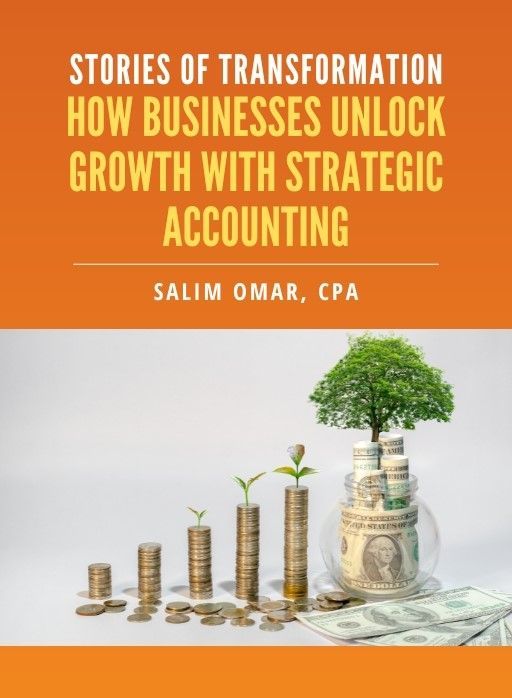Business Tax Extensions 2025: Pros, Cons, and Common Pitfalls Explained
A tax extension isn’t procrastination—it’s a planning tool. Used well, it buys time to finalize books, optimize elections, and file a defensible return. Used poorly, it creates penalty exposure, cash surprises, and a stressful scramble. Here’s the no-spin view on when a business tax extension makes sense in 2025, what the tax extension deadline 2025 really means, and how to avoid the traps that catch even seasoned operators.
Buy Time to File Right, Not Fast
When to extend
- Open items: late K‑1s, pending audit tie-outs, complex consolidations, or multi-state apportionment that needs another pass.
- Strategic choices pending: R&D credit support, accounting method changes, bonus depreciation strategy, state PTE elections.
- Resource constraints: closing the quarter, diligence, or system changes that risk rushed numbers.
What to expect
- A calmer, sequenced workflow: lock the trial balance, complete tax adjustments, then finalize elections with documentation to back positions.
Optimize Cash Without Surprises
Extensions delay the filing, not the obligation to pay. That’s the most misunderstood reality.
Smart cash plays
- Make a conservative extension payment based on YTD performance and current run rate; add cushion for open items.
- Continue quarterly estimates on schedule; don’t treat the extension as a payment holiday.
- Use the extra time to tighten revenue recognition, confirm credits/deductions, and right-size the final liability rather than overpaying early.
Net effect
- Minimize underpayment penalties while preserving optionality. Treat cash like a scarce resource; treat penalties like a tax you don’t need to pay.
Access Better Decisions with Breathing Room
Why extensions help quality
- Elections and credits are documentation heavy. The extra weeks let teams move from “good enough” to “audit ready.”
- Stakeholder alignment (finance, legal, external tax) improves when no one is sprinting to an avoidable deadline.
- A weekly cadence—cash review, open issues list, decision log—keeps momentum without chaos.
Where Extensions Backfire
Common failure modes
- Underpaying: Assuming “we’ll settle up later” invites penalties and interest.
- Overconfidence: Extending because “we always do,” then letting work stall until a new crunch emerges near the extended deadline.
- Broken ownership: No clear RACI on who drives schedules, elections, memos, and signoffs.
- Documentation gaps: Filing later without strengthening the file—positions still lack support, memos, or tie-outs.
- State misalignment: Extending the federal return but missing state-specific extension filings, payments, or separate forms.
Pros and Cons at a Glance
Upside
- Higher-quality returns with fewer notices and amendments.
- Time to validate credits/elections and align with GAAP, covenants, and board expectations.
- Smoother workloads and less burnout across finance and tax teams.
- Better cash positioning by avoiding premature overpayments.
Downside
- Requires disciplined cash planning to avoid penalties and interest.
- Can mask operational issues (slow close, weak processes) if used as a crutch.
- Risks multiply if state rules and deadlines aren’t tracked alongside federal.
- Without project management, the extra time evaporates, and quality gains disappear.
Decision Matrix: What to Extend vs. What to Lock
Extend first (high leverage)
- Federal and applicable state income tax returns (entity-specific: partnerships, S corps, C corps via the appropriate extension forms).
- Complex credit packages (R&D and other incentives) and method change analyses.
- Multi-state apportionment, nexus evaluations, and PTE elections needing modeling and owner communication.
Keep tightly governed (control-critical)
- Cash flow forecasting, extension payments, and estimate schedules.
- Revenue recognition policies and any significant accounting judgments.
- Access controls: treasury movements, bank approvals, payroll, and sensitive owner data.
- Final sign-offs on elections with board, lender, or investor implications.
Execution Playbook for 2025
- Freeze the books: Close checklist completed; variance analysis signed; trial balance locked before tax adjustments begin.
- Build a decision log: Track elections, assumptions, and documentation status; assign owners and due dates.
- Run a weekly cadence: Cash visibility, open items, blocker removal; escalate risks early.
- Document as you go: Map return lines back to workpapers; memo all high-judgment positions.
- Align states early: Confirm each state’s extension form, payment rules, and e-file requirements; calendar them.
Who Should Consider an Extension This Year
- High-growth companies with complex revenue, multi-entity structures, or new state footprints.
- Teams with material open items (K‑1s, acquisitions, ERP changes) that make rushing risky.
- Businesses planning elections or credits that require clean substantiation and modeling.
Bottom Line
In 2025, a tax extension is a precision tool—not a delay button. If cash planning is disciplined, ownership is clear, and documentation improves during the extra time, extensions pay for themselves through fewer notices, stronger positions, and smarter use of capital. If not, they simply defer a problem. Choose the former—and run the process with the same rigor applied to closing the quarter.
Ready to turn filing delays into strategic wins?
Book a 20-minute Extension Advantage Session—leave with an optimized payment plan, a clean documentation checklist, and a no‑rush filing timeline that protects cash and compliance.
Free eBook:
Stories of Transformation


Salim is a straight-talking CPA with 30+ years of entrepreneurial and accounting experience. His professional background includes experience as a former Chief Financial Officer and, for the last twenty-five years, as a serial 7-Figure entrepreneur.





